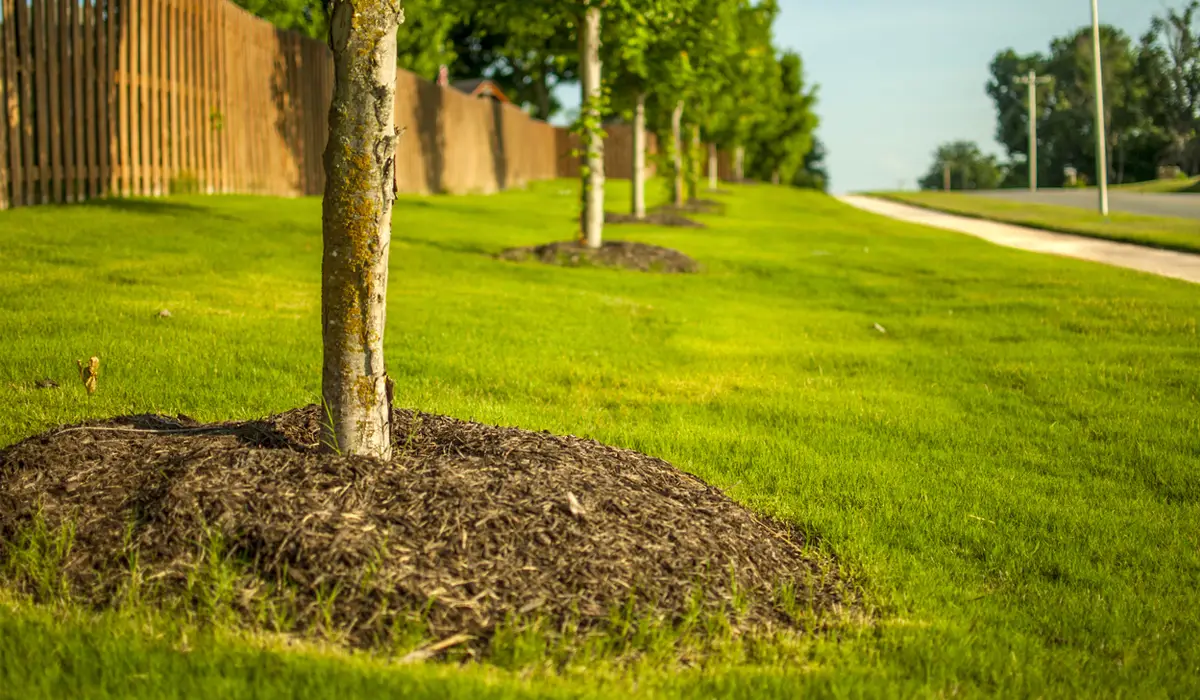
Enhancing Cities With Tree Planting Initiatives
Tree Planting Ideas For City Improvement
White Oak Tree Care is passionate about urban forestry and urban tree planting initiatives. Our commitment goes beyond landscaping—we believe trees can shape environments, improve air quality, and improve the health of communities. We provide comprehensive tree care services tailored to each urban landscape.
Whether you want to improve your home’s appearance or sustainability, our team is committed to helping you achieve your goals, just call (630) 520-2690 or visit our website to learn more about our services and start your greener future.
Benefits Of Urban Tree Planting
Planting trees in cities makes the air cleaner and cooler by filtering out pollutants and providing shade. Trees also make cities look better and raise property values.
• Embracing Biodiversity
Urban tree planting initiatives not only improve the visual appeal of our cities, but they also promote biodiversity by providing habitats for a wide range of plant and animal species. We can help local ecosystems and strengthen the resilience of our urban forests by choosing and incorporating native tree species into urban landscapes.
• Promoting Public Health
Beyond their ecological benefits, trees have been shown to have a positive impact on public health, contributing to improved mental well-being and physical fitness. Access to green spaces and tree-lined streets has been associated with reduced stress levels, increased physical activity, and enhanced overall quality of life for urban residents.
Strategies For Effective Urban Tree Planting
To promote healthy growth and longevity, urban tree-planting strategies should choose local tree species and use sustainable planting methods. Urban trees’ environmental and social benefits depend on on-site preparation and maintenance.
• Appropriate Tree Selection
Since it directly affects the resilience and long-term health of urban forests, choosing the right trees is essential to the success of urban tree planting programs. When selecting tree species for urban settings, factors like climate, soil conditions, available space, and intended use must be carefully taken into account. Urban foresters can optimize growth, minimize maintenance needs, and improve ecosystem services like air purification, stormwater management, and wildlife habitat provision by choosing native or well-adapted species.
• Sustainable Planting Practices
Urban tree health and vitality depend on sustainable planting practices. The comprehensive method of planting trees considers soil health, water availability, and environmental impact. Site preparation, mulching, and watering schedules help newly planted trees develop healthy roots and reduce stress. Native species and diverse tree species increase urban ecosystem biodiversity and resilience. Cities can create healthier, more resilient urban forests that benefit people and the environment by using sustainable planting methods.

Urban Tree Canopy Management
To maximize city and resident benefits, urban tree canopy management improves canopy coverage and health. This includes planting, pruning, and preserving trees to reduce energy use, urban heat island effect, and shade.
• Maximizing Canopy Coverage
For urban trees to provide their full benefits, urban forestry, and tree canopy management must maximize canopy coverage. Cities can develop a denser canopy that provides shade, temperature regulation, and stormwater absorption by strategically planting and preserving trees. This involves identifying low-canopy areas and targeting planting trees, maintenance, and preservation to increase tree density. Increased canopy coverage reduces the urban heat island effect, improves air quality, and makes cities more sustainable.
• Preserving Mature Trees
Maintaining urban ecology and aesthetics requires preserving mature trees. These trees, the backbone of urban green spaces, provide shade, wildlife habitat, and carbon sequestration. In urban forestry, preserving mature trees requires mitigating pests, diseases, and development pressures. Cities can preserve mature trees and their benefits to urban ecosystems by using tree canopy management techniques like pruning, structural support, and root zone protection.
Environmental Tree Planting Initiatives
Strategic tree planting addresses environmental issues in urban areas to improve ecological sustainability and resilience. Local communities and stakeholders work together to promote biodiversity, improve air and water quality, and create green spaces for people and the planet.
• Community Engagement
Engaging local communities and stakeholders is key to the success of environmental tree-planting initiatives. By involving residents in planting trees events and educational programs, we foster a sense of ownership and stewardship towards urban green spaces. Our community-based approach empowers individuals to take an active role in environmental conservation and contribute to the long-term health of their neighborhoods.
• Integrating Green Infrastructure
Environmental tree-planting initiatives can also play a vital role in the development of green infrastructure projects. By strategically planting trees in urban areas, we can help manage stormwater runoff, reduce flooding, and improve water quality. Our team collaborates with city planners and landscape architects to integrate trees into green infrastructure designs, creating sustainable solutions that benefit both people and the planet.
At White Oak Tree Care, we are committed to harnessing the power of urban forestry and tree-planting initiatives to create healthier, more sustainable cities. From selecting appropriate tree species to implementing sustainable planting practices and managing tree canopies, we offer comprehensive services to meet the diverse needs of urban environments. Contact us today at (630) 520-2690 to learn more about us and take the first step towards enhancing your city’s landscape.





 Powered by
Powered by